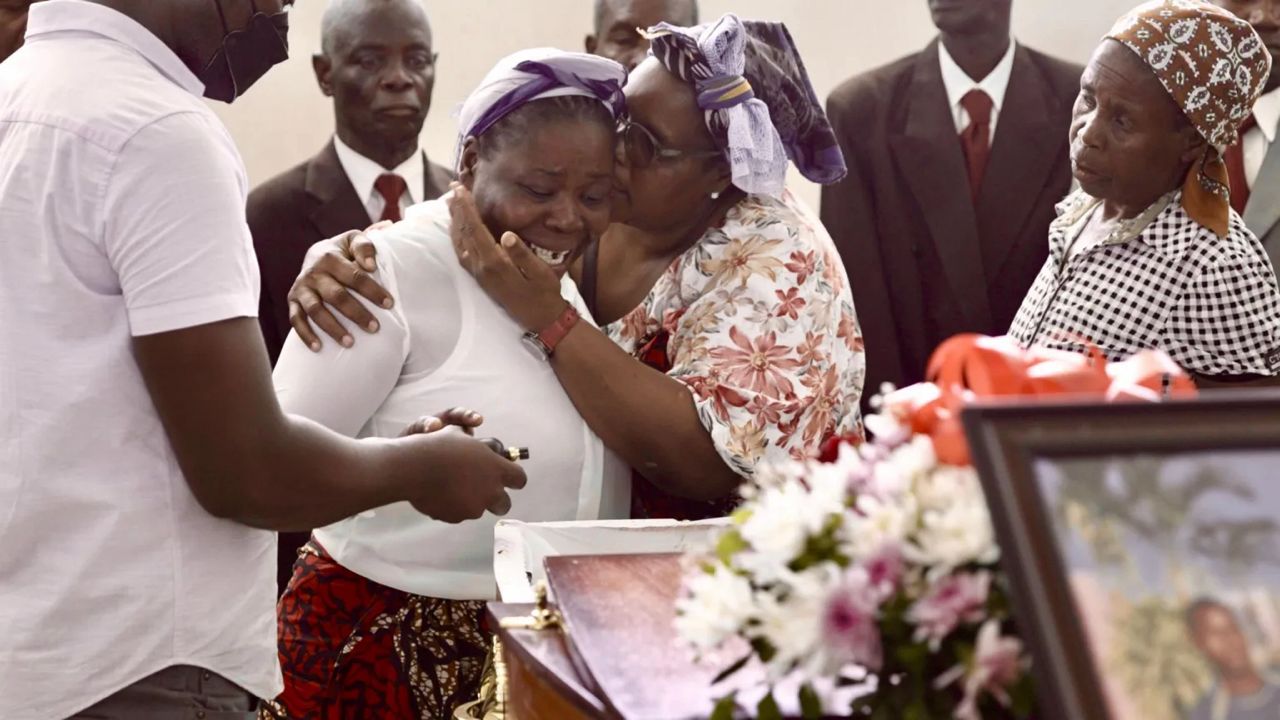Health and social services deputy minister Ester Muinjangue on Tuesday confirmed cases of chronic lead exposure at Rosh Pinah in the //Kharas region.
Muinjangue said 10 cases of chronic lead exposure among children between the ages of one and 12 were reported at Lüderitz and Rosh Pinah in July this year.
“A regional management team was dispatched to Rosh Pinah on 6 July to investigate the allegations. A follow-up visit is scheduled for 17 to 21 July to conduct further extensive review of records, engage the community and render psychosocial support.
“The team will comprise occupational health, communicable disease control officials, the World Health Organisation, epidemiologists, laboratories, et cetera,” Muinjangue said.
Lead is distributed throughout the body, including the brain, liver, kidneys, and bones.
It accumulates over time in the teeth and bones, and during pregnancy, lead in bone can be released into the blood, thereby becoming a source of exposure of a developing fetus.
Labour consultant Paul Dausab on Monday claimed Trevali Mining Corporation, previously known as Rosh Pinah Zinc Mine, which mines lead and zinc, three years ago commissioned the company’s in-house doctor and head of occupational health, Dr Johan Truter, to draft a report on lead exposure among children and infants.
Dausab said tests were reportedly conducted on 30 children, confirming chronic lead exposure.
‘SECRET’ REPORT
He claimed the mine has been keeping this report under wraps.
Truter in the report allegedly recommended that measures are taken and advised the company to inform the Ministry of Health and Social Services, the Ministry of Mines and Energy and the Ministry of Environment, Forestry and Tourism of the cases.
Truter’s employment contract reportedly then came to an abrupt end and he relocated to Cape Town, South Africa, Dausab said.
“You know the non-disclosure clause between employer and employee made that the doctor could not release this report, but according to the report, all 30 children exhibited high levels of lead in their blood.
“This company is keeping quiet about this lead exposure, while our kids could develop brain damage. Lead can also impact their central nervous system,” he said.
“Therefore, we can no longer keep quiet about this thing as these findings were reportedly already made three years ago, and what has been done about it?
“You cannot barter with our children’s health, because the mine has to make money,” the labour consultant said.
The vice president of operations at Trevali Mining Corporation, Sharon Kavihua, this week said the company would send an official response to the allegations by the end of yesterday, but a response from the company was not received.
Mines commissioner Elizabeth Chirchir yesterday said the ministry is awaiting a report from the mine.
“Questions surrounding lead exposure came to my office this afternoon. We are currently awaiting a report on this from the mine,” she said.
Kurt Dausab, a former doctor at the mine, who reports to the ministry, yesterday said the issue of lead exposure did not start six months ago or when the company was bought by Trevali Mines three years ago.
He said the company has been hiding the matter.
‘DEVASTATING’
“I was working at Rosh Pinah from 19 February 2002 to 30 April 2017. I was tasked by Mike Castlyne, the resident engineer, to conduct an assessment on the issue, and the result was devastating,” he said.
Castlyne has reportedly also left the company.
Dausab conducted tests on 10 children, he said, and in one case, a one-year-old baby exhibited a blood-lead concentration of 25 micrograms per decilitre in the body, while a two-year-old had a lead concentration of 22.
The blood-lead level in children should not exceed 5 micrograms per deciliter.
Most houses built close to the hostel opposite the Oranjemund road, which separates the town and Bet-El 1, 2, 3 and Fishing Street, are directly impacted, the doctor said.
SEIBEB DEMANDS ANSWERS
Landless Peoples’ Movement deputy leader Henny Seibeb has given notice to the parliament that he will on 14 September ask the minister of mines and energy, Tom Alweendo, whether his office is aware of the lead exposure and whether the mines and energy ministry is following recommendations.
“In some countries, a blood-lead reference value of 3,5 micrograms per deciliter is utilised, and if this lower value were applied in Namibia, it is possible that more children would be identified as having lead exposure.
“We need to find out from the minister when they plan to conduct joint meetings with Cabinet colleagues […] to investigate these issues thoroughly and deliver a comprehensive briefing to [the National Assembly],” Seibeb said.
He said it is crucial that such information is released and in the public domain as it would enable parents, doctors, public health officials and communities to take action to reduce the children’s exposure to lead.
Stay informed with The Namibian – your source for credible journalism. Get in-depth reporting and opinions for
only N$85 a month. Invest in journalism, invest in democracy –
Subscribe Now!






